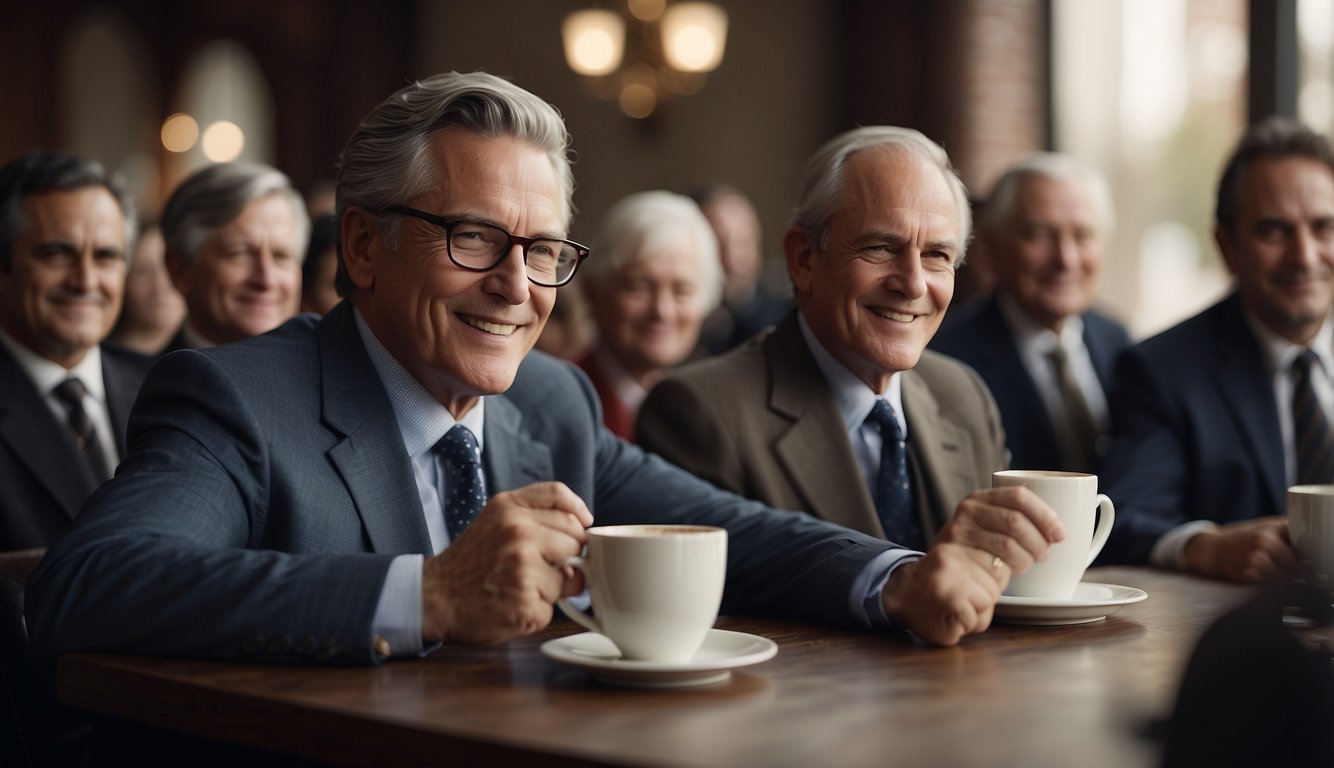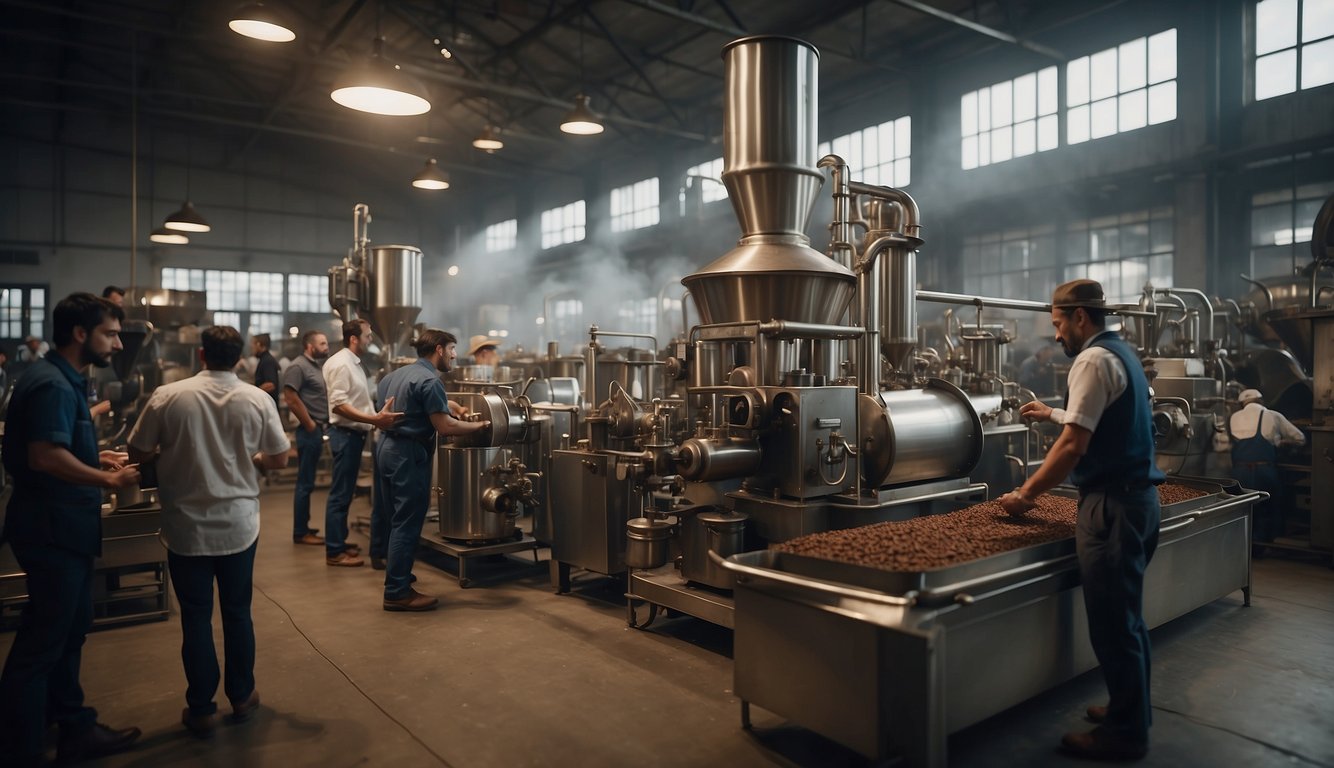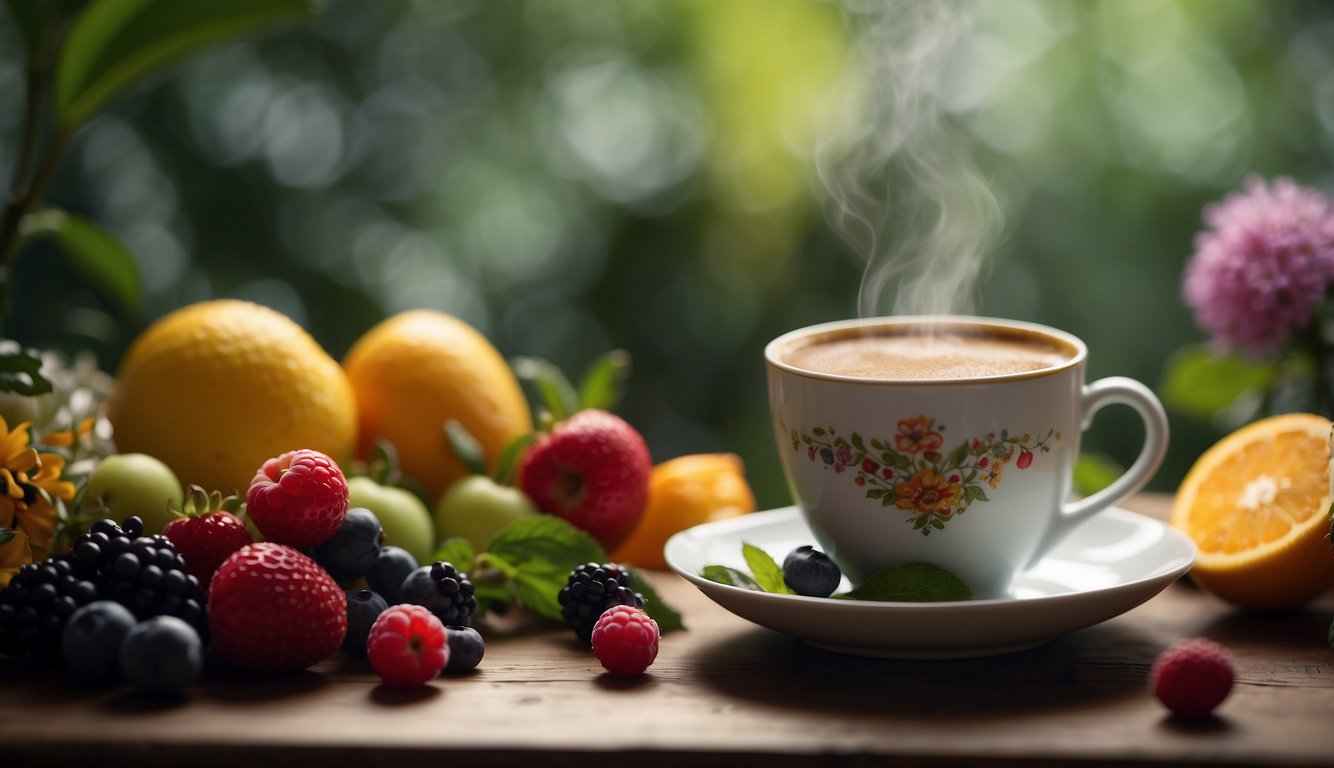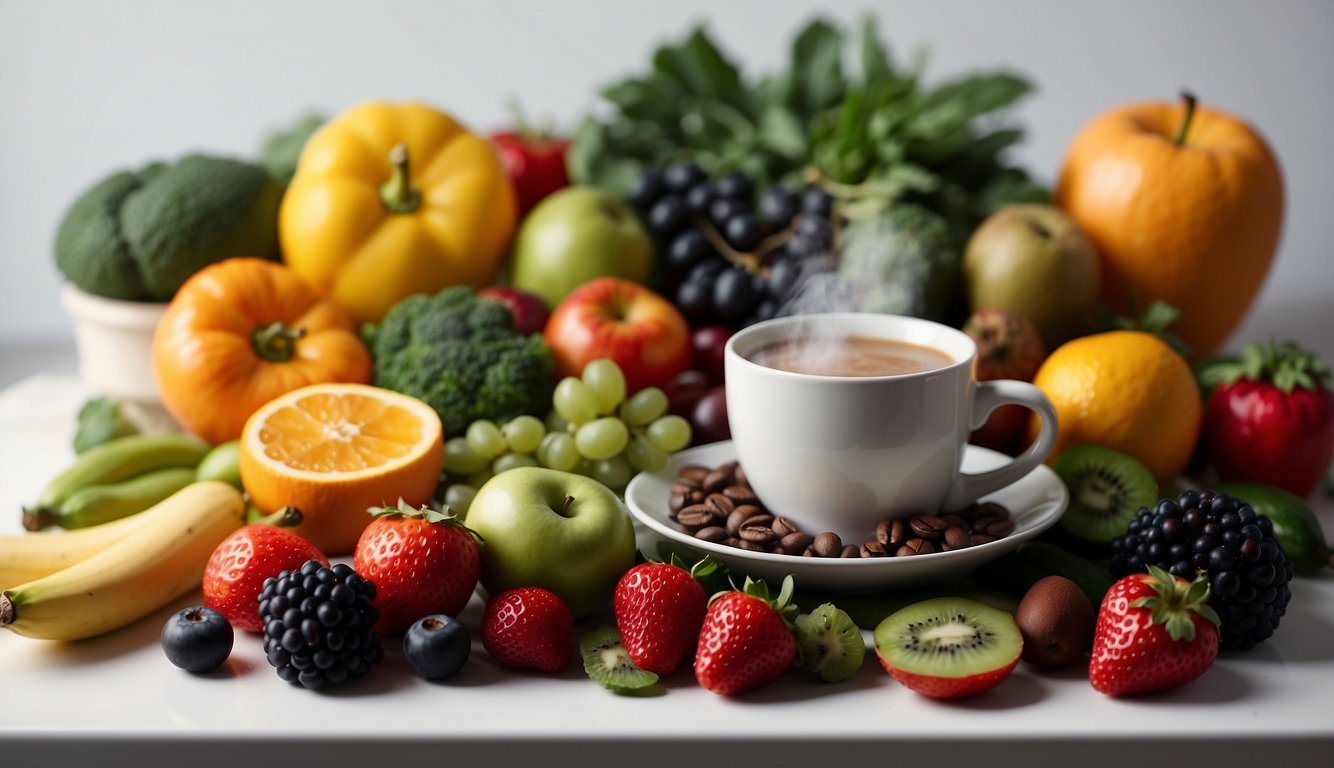Coffee lovers often wonder how long their brew will stay hot. The duration coffee remains warm is essential for those looking to savor it at the perfect temperature. Various factors contribute to heat retention in coffee, such as the type of container it’s in and any additives included.

Knowing how to maintain the temperature of your coffee can enhance the drinking experience. Techniques range from preheating your mug to using specially designed thermoses. These methods ensure that you can enjoy your coffee hot for as long as possible.
Key Takeaways
- Heat retention in coffee is influenced by container choice and additives.
- Temperature maintenance techniques can significantly extend coffee warmth.
- Estimating cool down time is useful for enjoying coffee safely.
Understanding Heat Retention in Coffee

Heat retention in coffee is primarily dictated by thermodynamics and the materials involved in its storage. These factors determine how long coffee maintains its optimal temperature after brewing.
Thermodynamics of Heat Retention
In coffee, heat retention depends on heat transfer processes. These involve conduction, convection, and radiation. Heat is lost when it transfers from the hot coffee to its cooler surroundings. This transfer can be slowed down, allowing coffee to stay hot for a longer period.
Materials and Heat Conductivity
The materials of the container holding the coffee are crucial for heat retention. Containers made from materials with low thermal conductivity, such as stainless steel or ceramic, are best. They are poor conductors of heat, which means they do not allow heat to escape easily. A good thermos can retain coffee’s heat, maintaining its temperature for extended periods.
Factors Affecting Coffee Temperature

The temperature of coffee is influenced by multiple factors. Understanding these factors helps maintain the desired warmth.
Volume of the Coffee
The amount of coffee has a direct impact on how long it stays hot. Larger volumes retain heat longer due to a lower surface area to volume ratio.
Room Temperature
The ambient temperature of the room plays a crucial role in heat retention. Coffee in cooler environments cools down faster than in warmer conditions.
Initial Brewing Temperature
Coffee brewed at higher temperatures typically stays hot longer. The ideal brewing temperature ranges between 195°F and 205°F for optimal extraction and heat retention.
Coffee Container Types

Different containers keep coffee hot for varying durations. The material and design play crucial roles in a container’s heat retention capabilities.
Thermal Mugs and Flasks
Thermal mugs and flasks are designed for maximum heat retention. They often have vacuum insulation, which significantly slows down the cooling process. Certain mugs have the ability to keep coffee warm for hours.
Standard Ceramic Mugs
Ceramic mugs are common for enjoying hot coffee at home or in the office. While they don’t offer long-term heat retention, ceramic’s thick walls can help keep coffee warm for a short period.
Disposable Coffee Cups
Disposable cups are convenient but not the best insulators. Coffee in standard disposable cups cools quicker. Some have a thin foam layer to extend the heat retention slightly.
Glassware and Heat Loss
Glassware is not typically associated with good insulation. Glass transfers heat quickly, which causes coffee to cool faster. It is more suited for visual appeal.
Temperature Maintenance Techniques

Maintaining the heat of coffee involves several practical methods. Each technique offers specific benefits to ensure a warm cup longer. Here, we explore three effective strategies.
Preheating the Container
One can increase the time coffee stays hot by preheating the container. Pouring hot water into the thermos before adding coffee warms it, thereby preventing heat loss when the coffee is added. This technique can significantly extend the heat retention period.
Using Lids to Retain Heat
Using lids is a simple yet effective way to retain heat. A tight-fitting lid prevents heat from escaping, keeping the coffee warmer for a longer duration. Lids act as a barrier, reducing the coffee’s exposure to cooler ambient air.
Insulation Methods
Insulation is key to heat retention. Various insulation methods, such as double-wall vacuum flasks, can keep coffee hot for up to 12 hours. These flasks are designed to hinder heat transfer from the coffee to the surrounding environment. For even better results, high-quality thermos options can preserve heat for up to 24 hours.
The Role of Coffee Additives

Coffee additives can influence the temperature and taste of the final cup. They affect how long the brew retains its warmth.
Effect of Milk and Creamers
When people add milk or creamers, they reduce the coffee’s temperature. Milk has a cooling effect because it is typically refrigerated. Creamers, which come in various forms, can alter not only the heat but also the flavor and texture of the coffee. Whether dairy or plant-based, creamers should be poured in moderation to maintain the desired coffee temperature.
Impact of Sugars and Sweeteners
Adding sugars and sweeteners also changes the coffee’s temperature. Granulated sugar dissolves in the hot liquid, having a minimal impact on temperature. Liquid sweeteners or syrups may have a greater effect if they are cold. They can also create a richer taste and a slightly thicker consistency which might retain heat marginally better. Sweeteners often come with flavors that can complement or mask the coffee’s natural profile.
Estimating Coffee Cool Down Time

The time it takes for coffee to cool down depends on several factors, including the initial temperature and the surrounding environment. This section explores two methods to estimate the cooling time of coffee.
Using the Coffee Cooling Equation
Newton’s Law of Cooling provides a mathematical way to estimate cooling time. The law suggests that the temperature change of an object is proportional to the difference between its temperature and the ambient temperature. The equation used to describe this is:
T(t) = T_amb + (T_initial – T_amb) * e^(-kt)
- T(t) is the temperature of the coffee at time t.
- T_amb is the ambient or surrounding temperature.
- T_initial is the initial temperature of the coffee.
- e is the base of the natural logarithm.
- k is the cooling constant that varies with the conditions.
- t is the time since cooling began.
To apply this equation, one can use a Newton’s Law of Cooling Calculator, which simplifies the process by allowing the user to input known values to predict coffee cooling time.
Empirical Observations
Empirical methods rely on real-world tests to estimate cooling time. One common observation is that, on average, coffee will cool to a comfortable drinking temperature within a few minutes once served. However, factors such as cup material and airflow can make a difference.
In contrast, cooling coffee by placing it in a fridge can be a slower process. It might take between 30 minutes to an hour to reach a cold temperature. This method also can alter the coffee’s taste and aroma.
For a quick cool down, some people prefer adding ice cubes, which can reduce temperature rapidly but also dilutes the coffee. Users should experiment with different methods to find the one that best suits their preferences.
Health and Safety Considerations

When enjoying coffee, consideration for temperature is crucial for both enjoyment and safety. The health and safety of coffee consumers can be affected by the temperature at which coffee is served and consumed.
Optimal Drinking Temperature
- Coffee is best consumed at 120°F to 140°F.
- At this range, it is hot enough to enjoy the flavors but not so hot that it can cause burns.
Risks of Overly Hot Beverages
- Coffee served above 160°F can cause scald burns.
- The risk increases significantly with beverages over 185°F.
Drinking coffee at a moderate temperature is key to avoiding these risks.
Frequently Asked Questions

Maintaining the warmth of coffee is a topic that garners considerable attention among coffee drinkers. Here, key methods and materials are discussed to ensure a steaming cup.
What methods can extend the warmth of coffee without using electricity?
People can use insulated thermoses or preheat their cups with hot water. Wrapping the mug in a cloth also keeps the heat in for longer.
Is it possible to maintain the temperature of coffee overnight, and if so, how?
Keeping coffee warm overnight is challenging. However, placing it in a high-quality vacuum flask can keep it significantly warmer until the morning.
What are effective strategies for keeping large amounts of coffee hot during events?
For big gatherings, use insulated dispensers or urns. One could also employ the method of preheating with hot water to sustain temperature.
Can coffee be kept hot in a refrigerator, and what is the expected time frame?
A refrigerator does not keep coffee hot. Instead, a refrigerator cools items down. For hot coffee, this is not the correct storage method.
What are the best containers or materials for retaining heat in coffee for extended periods?
Containers made of stainless steel with vacuum insulation are best. They lock in heat, preventing coffee from cooling down too quickly.
At what rate does coffee typically cool down, and what factors influence this?
Coffee generally cools at a rate depending on the room temperature and the cup’s material. A ceramic mug loses heat faster than an insulated one.
































